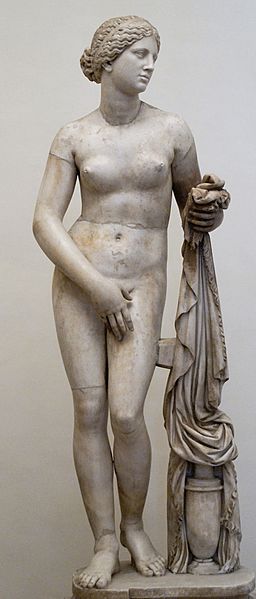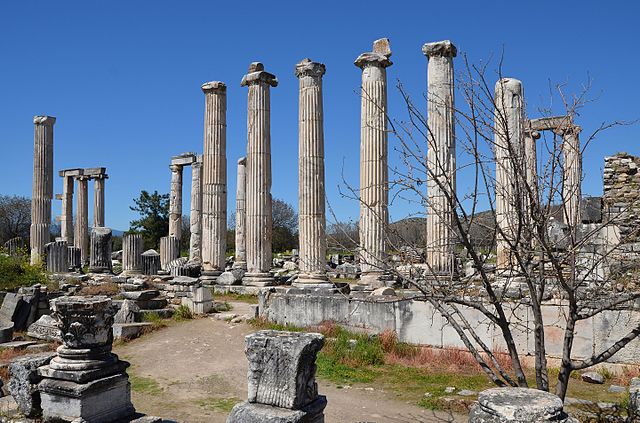In Greek mythology, Peitho is the personification of persuasion. She is typically presented as an important companion of Aphrodite. Her opposite is Bia, the personification of force. As a personification, she was sometimes imagined as a goddess and sometimes an abstract power with her name used both as a common and proper noun. There is evidence that Peitho was referred to as a goddess before she was referred to as an abstract concept, which is rare for a personification. Peitho represents both sexual and political persuasion. She is associated with the art of rhetoric.
Pompeiian fresco of Eros being brought by Peitho to Aphrodite
Fragment depicting Peitho, Aphrodite, and Eros. This skyphos fragment may be the earliest known artistic representation of Peitho, circa 490 B.C.E. (The Metropolitan Museum of Art).
A Roman relief depicting Peitho, circa 1st century B.C.E. (The Metropolitan Museum of Art).
Aphrodite is an ancient Greek goddess associated with love, lust, beauty, pleasure, passion, procreation, and as her syncretized Roman goddess counterpart Venus, desire, sex, fertility, prosperity, and victory. Aphrodite's major symbols include seashells, myrtles, roses, doves, sparrows, and swans. The cult of Aphrodite was largely derived from that of the Phoenician goddess Astarte, a cognate of the East Semitic goddess Ishtar, whose cult was based on the Sumerian cult of Inanna. Aphrodite's main cult centers were Cythera, Cyprus, Corinth, and Athens. Her main festival was the Aphrodisia, which was celebrated annually in midsummer. In Laconia, Aphrodite was worshipped as a warrior goddess. She was also the patron goddess of prostitutes, an association which led early scholars to propose the concept of "sacred prostitution" in Greco-Roman culture, an idea which is now generally seen as erroneous.

The Ludovisi Cnidian Aphrodite, Roman marble copy (torso and thighs) with restored head, arms, legs and drapery support
Early fifth-century BC statue of Aphrodite from Cyprus, showing her wearing a cylinder crown and holding a dove
Aphrodite Ourania, draped rather than nude, with her foot resting on a tortoise (Louvre)
Ruins of the temple of Aphrodite at Aphrodisias







